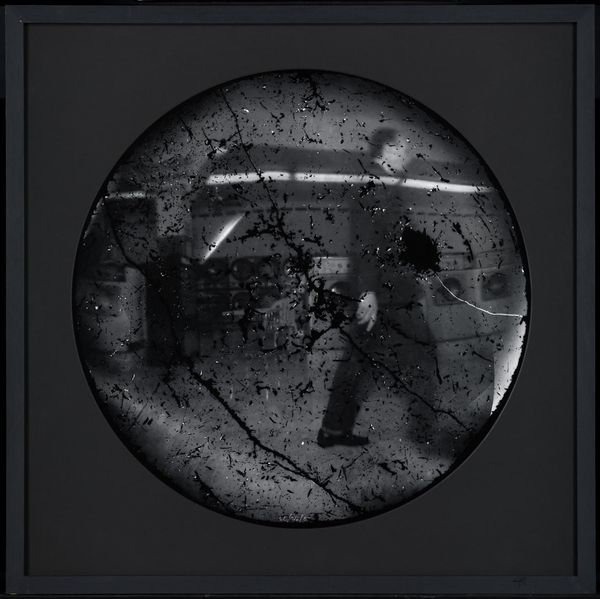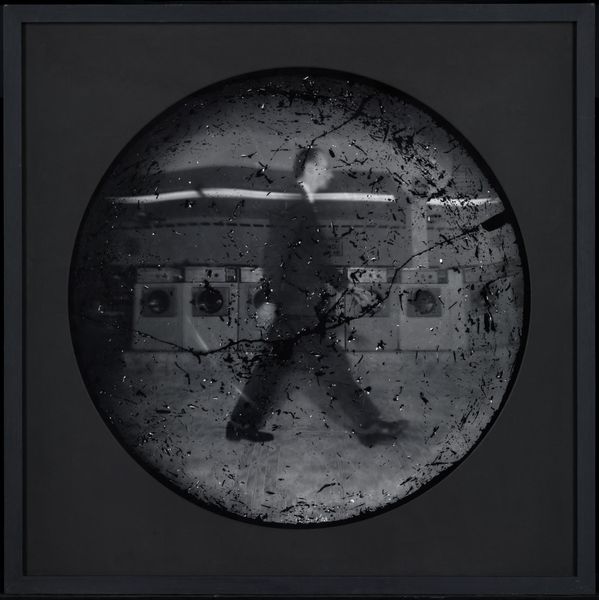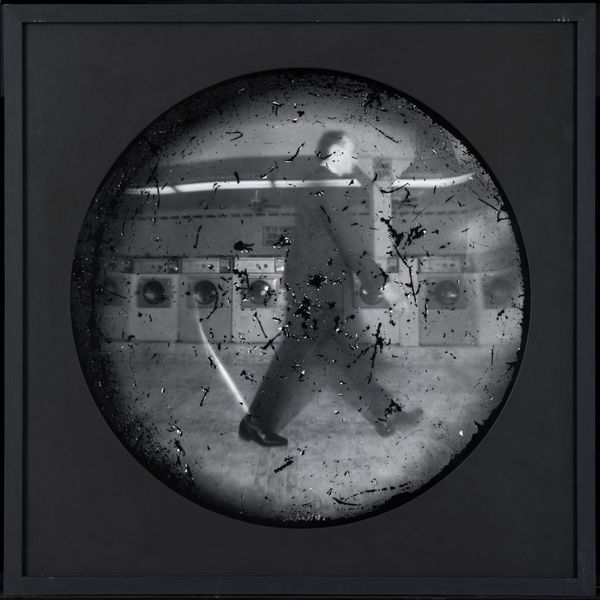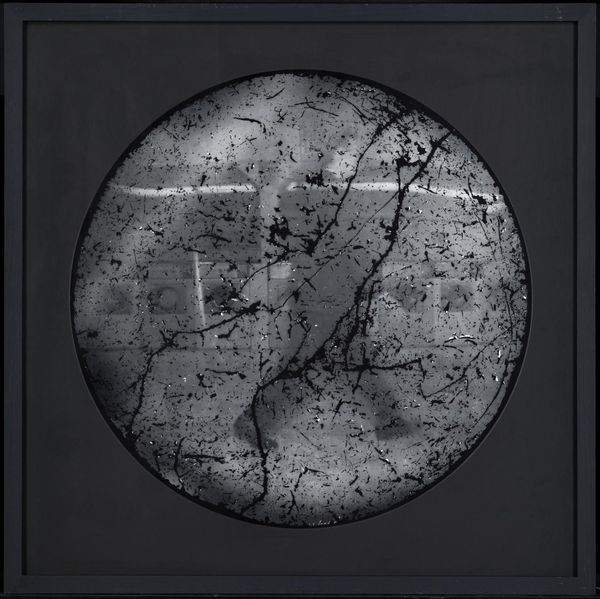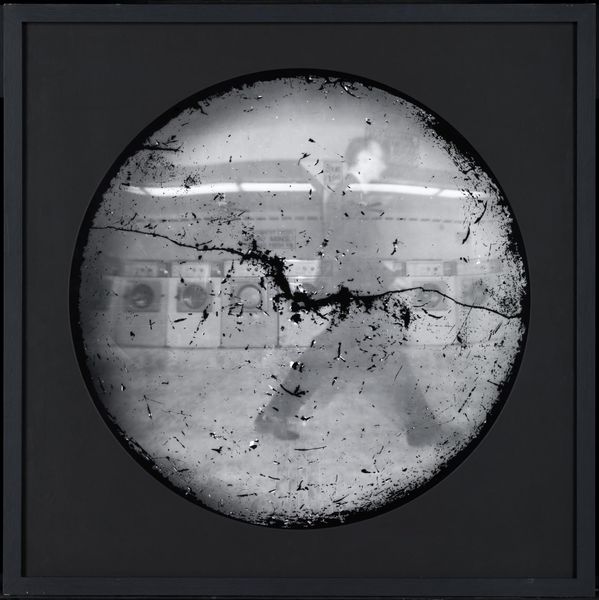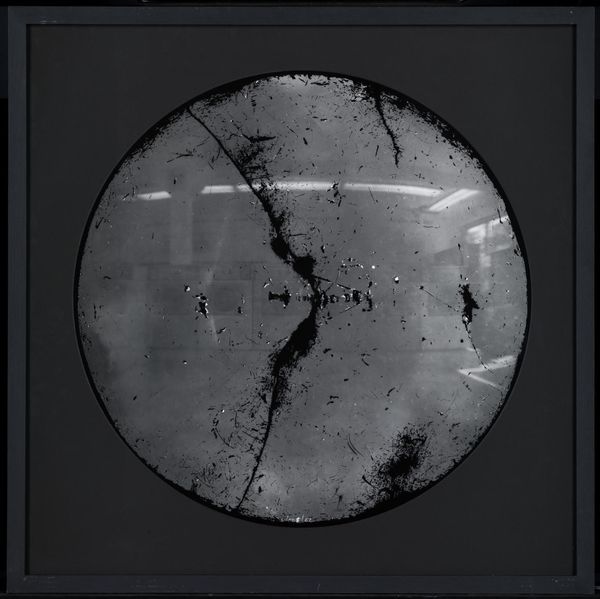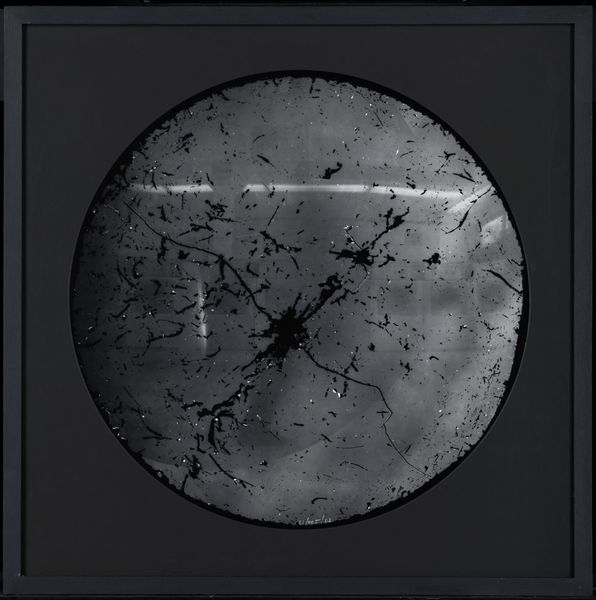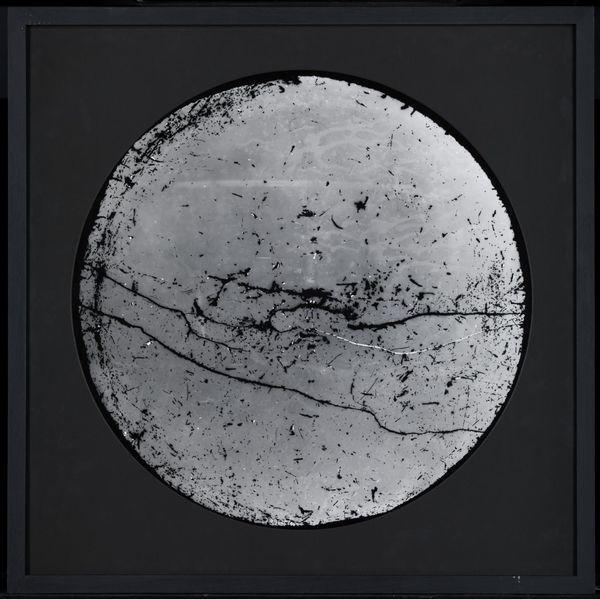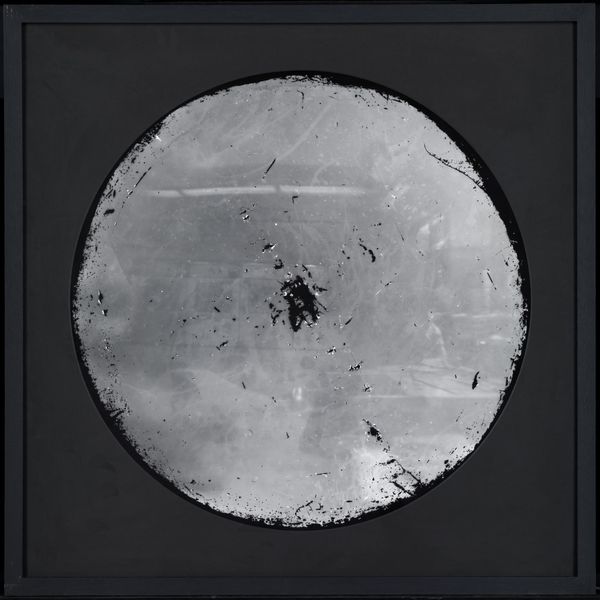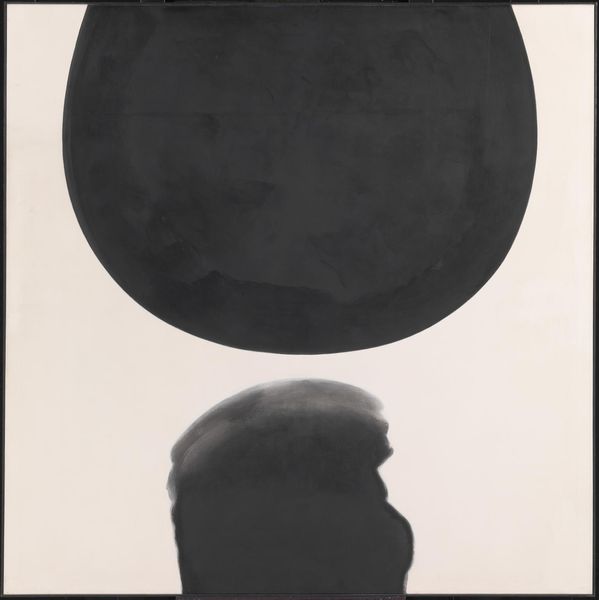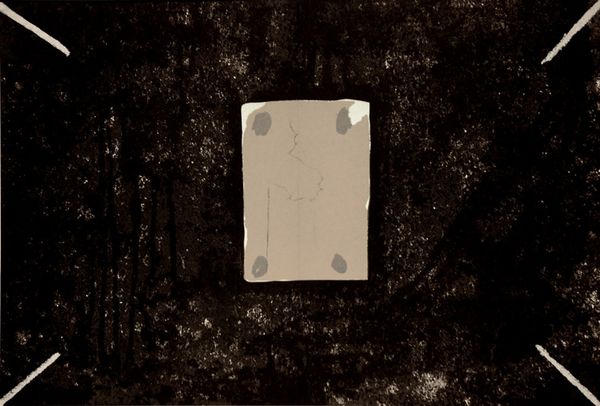
Dimensions: support: 761 x 763 mm
Copyright: © Steven Pippin | CC-BY-NC-ND 4.0 DEED, Photo: Tate
Curator: Immediately, I'm struck by the tension between the mundane setting and the figure's determined stride; it creates a sense of surreal unease. Editor: Here we have Steven Pippin's piece, "Laundromat-Locomotion (Walking in Suit)," from the Tate Collections. Pippin, born in 1960, often explores the intersection of photography and everyday life. Curator: The circular format adds to this feeling, almost like looking through a distorted porthole into a memory, or perhaps a dream. The cracks make it look old. Editor: It's interesting how Pippin uses the laundromat—a place of repetitive, domestic labor—as the stage for this man's purposeful walk. Is he escaping something, or perhaps going to the place where the soul becomes bare? Curator: Perhaps both? The walking man reminds us of those who walk in place, stuck in lives that are filled with chores and repetition. Editor: Indeed. The stark black-and-white tonality further emphasizes the starkness of the scene, a nice compliment to the cracks on its surface. Curator: This simple scene holds a lot of cultural weight, I think. Editor: Precisely, and analyzing Pippin's formal decisions only deepens its intrigue.
Comments
tate 8 months ago
⋮
http://www.tate.org.uk/art/artworks/pippin-laundromat-locomotion-walking-in-suit-p78485
Join the conversation
Join millions of artists and users on Artera today and experience the ultimate creative platform.
tate 8 months ago
⋮
from Laundromat-Locomotion (Walking in Suit) (P78475-P78486; Complete group) Laundromat-Locomotion (Walking in Suit) 1997Photograph on papersupport: 760 x 763 mmon paper, printPurchased 2001P78485 Steven Pippin first experimented with temporarily transforming washing machines into cameras in 1989 after he had noticed a number of similarities in the workings of washing machines and the development of photographs. For him 'the elaborate and precise mechanism of the washing machine was a perfect system for making photographs. The eye of the machine (with the addition of an aluminium hood combining lens and shutter device) adapted to the transition of camera lens with the slightest of intervention. The pre-wash, rinse, main wash and final rinse cycles adapted to the chemical process of developer, rinse, fixer and final wash all of which were accurately temperature controlled.' (Steven Pippin, 'Pictorial Troubleshooting', in Discovering the Secrets of…, p.56.) London-based Pippin made his first Laundromat images in 1991. In 1997, using a row of twelve commercial washing machines in a laundromat based in Bayonne, New Jersey, he made a number of more ambitious series titled Laundromat-Locomotion. The title of these series refers to the analysis of human and animal motion undertaken by pioneering photographer Eadweard Muybridge (1830-1904). Published as Animal Locomotion in 1887, Muybridge's study examined movement through sequential images using a number of cameras furnished with mechanically tripped shutters. There is a direct relationship between Muybridge's work and Laundromat-Locomotion. Pippin has written that the more he thought about Muybridge 'the more it seemed necessary to pay some kind of tribute' and added that the excessive scratching caused by the negatives being spun at 500 rpm in a washing machine unexpectedly gave his images 'some degree of authenticity by making it look like an original Muybridge from one hundred years ago. The scratches on the negative surface becoming a substitute for time, an artificial ageing process lending the pictures an accidental air of authenticity.' (Steven Pippin, 'Applied Photography', in Laundromat - Locomotion, pp.153, 154.) Pippin's Laundromat-Locomotion series of 1997 mark the ambitious culmination of his washing machines project and Laundromat-Locomotion (Walking in Suit) is especially remarkable for the range of clarity to abstraction as the sequence progresses. It was produced in an edition of five (of which this is number one) and consists of twelve black and white contact prints made from paper negatives which were fixed to the back of the washing machines' drums, opposite the opening. Having previously set up twelve cotton tripwires in front of the adapted washing machines, the artist triggered the shutters sequentially by walking across the tripwires. The photographs portray him in profile, wearing a suit. Pippin often wears a suit while working and in this case he purposefully wore one both to install his apparatus and in the photographs as an 'ordinary' counterpoint to his eccentric activities, in order to blend in with the laundromat's customers. The suit worn by Pippin and clothing in general are a critical element of this work. Indeed, as the artist has stated, the idea of 'the physical mass of clothing inside the machine being replaced by the more ephemeral image of the clothes, projected inside by the action of light reflected from a suited figure walking past the outside, was the primary concept or meaning of the work, and is crucial to any understanding of it.' ('Applied Photography', p.157.) Further reading:Laundromat - Locomotion: Mr. Pippin, San Francisco Museum of Modern Art 1998, reproduced pp.18-9Discovering the Secrets of… Monsieur Pippin, exhibition catalogue, Fonds Régional d'Art Contemporain Limousin, Limoges 1995 Giorgia BottinelliJune 2002
